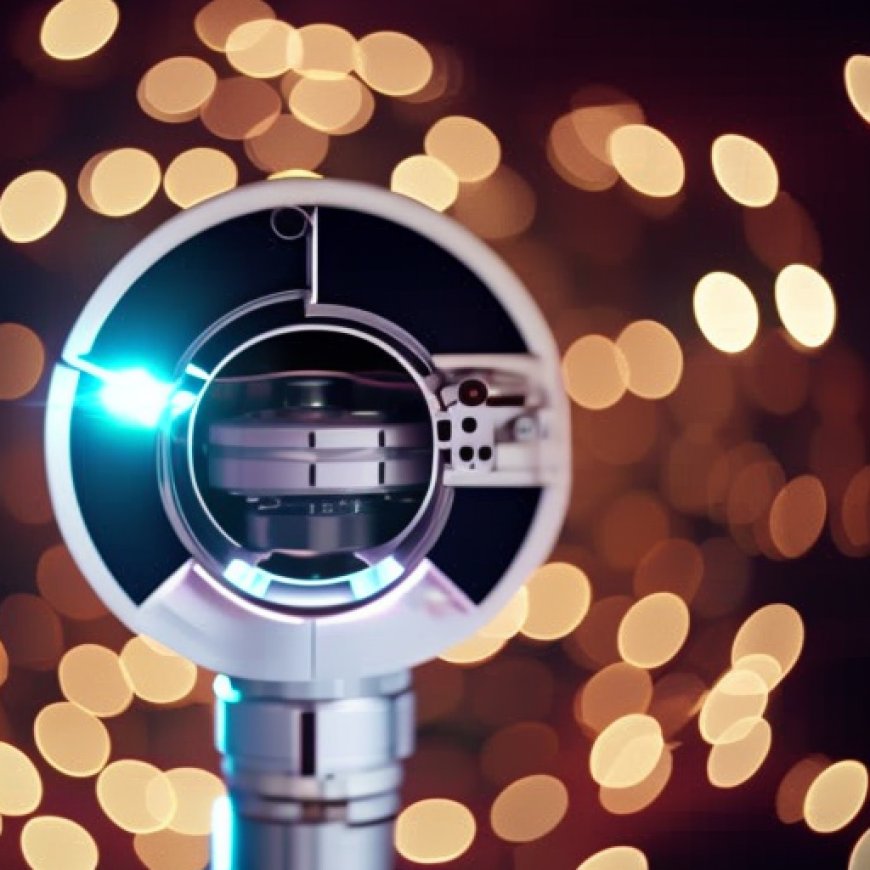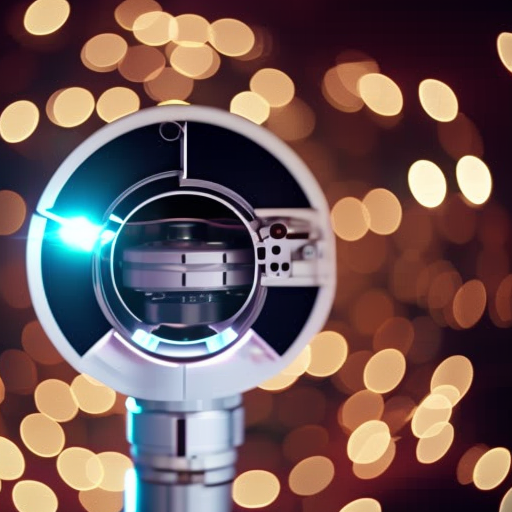laser technology and AI boosting the circular economy
Fraunhofer ILT: laser technology and AI boosting the circular economy Optics.org


Recycling sector increasingly relying on LIBS to spot reusable raw materials
27 Mar 2024
The recycling industry is increasingly relying on laser-induced breakdown spectroscopy (LIBS) to identify reusable raw materials in waste streams.
The Fraunhofer Institute for Laser Technology (ILT), Aachen, Germany, is developing this precision technology for element analysis and continuously expanding its range of applications.
The Sustainable Development Goals (SDGs)
- Goal 9: Industry, Innovation, and Infrastructure
- Goal 11: Sustainable Cities and Communities
- Goal 12: Responsible Consumption and Production
- Goal 13: Climate Action
The Importance of LIBS in the Circular Economy
The transformation to a circular economy is in full swing. Recycling rates for raw materials such as paper or aluminum from packaging are already above 90 percent. In order to close further material cycles, however, the recycling industry needs sensor-based processes that can identify a great deal of different recyclable materials in waste streams not only reliably, but also fully automatically and at high speed.
The ILT has a solution that can significantly improve recycling and minimize high-loss downcycling through highly efficient, reliable and differentiated analyses of the valuable materials contained in waste streams: LIBS is one of the key technologies for an economy based on actual material cycles. This is because the highly accurate, real-time spectroscopic determination of which chemical elements materials contain enables differentiated separation by type.
Laser-Induced Breakdown Spectroscopy (LIBS)
For spectroscopy, a high-energy laser pulse excites the surface of the material. This creates a plasma in which the chemical bonds between the elements of the material are broken up. The atomic fingerprint is different for each material and can be read spectroscopically at the moment when the atoms return to their stable state: they emit light in specific wavelengths, from which the respective element can be deduced. LIBS, therefore, reveals the exact chemical composition of the laser-excited material in fractions of a second.
Dr. Cord Fricke-Begemann’s materials analysis working group at ILT is driving the development of inline processes based on LIBS technology to pave the way for the unmixed recovery of metals from mountains of waste and scrap. He said, “Using a scanner-based selection of measuring points and around 100 LIBS measurements per second, we can quickly create two-dimensional representations of the element distribution. We can detect technology metals in electronic waste and thus, for example, return valuable tantalum from capacitors to the material cycle.”
Aluminum Recycling
Particularly for complex material compositions – as in electronic waste or end-of-life vehicles – one-to-one recycling depends crucially on the accurate, spatially resolved determination and separation of the individual material fractions.
This is what LIBS lays the foundation for: the automated, unmixed separation of a wide range of metal alloys using non-contact, laser-based, quasi-real-time analysis of materials. The process helps users determine how the materials can be used based on product, and, thus, identifies their full value.
However, the differentiated analysis of recyclable materials using LIBS is not only the basis for truly closed material flows without downcycling. It also paves the way for accelerated sorting processes and, in conjunction with automated sorting technology, contributes to their cost-effectiveness. “We can process much more scrap in a shorter time than with traditional manual sorting and also achieve genuine sorting purity,” said Fricke-Begemann.
As part of the PLUS project funded by the Federal Ministry of Education and Research (BMBF), the ILT and Cronimet Ferroleg, based in Karlsruhe, have made LIBS the basis for a new type of process that uses laser-based analysis for a special type of scrap. “These are worn-out drilling, turning and milling tools, which are collected separately in industry. Our project has addressed the special alloys processed in them,” said Fricke-Begemann.
Ultimately, they were able to automate and greatly accelerate the separation process by combining LIBS and robotics. The spectroscopic process identifies more than 20 different alloy elements, even in tiny scrap parts; the robot picks them up and sorts them accordingly. It is the blueprint for fully automated recycling, which can decisively contribute to making recycling processes more efficient.
LIBS in Battery Recycling
LIBS can also play a key role in the recycling of batteries, an ability that will soon be essential, says ILT, since the mobility sector is slowly transitioning to electricity and the stationary storage requirements are sharply increasing.
SDGs, Targets, and Indicators
1. Which SDGs are addressed or connected to the issues highlighted in the article?
- SDG 12: Responsible Consumption and Production
- SDG 9: Industry, Innovation, and Infrastructure
- SDG 13: Climate Action (implied)
The article discusses the use of laser-induced breakdown spectroscopy (LIBS) in the recycling industry to identify reusable raw materials in waste streams. This technology contributes to responsible consumption and production (SDG 12) by improving recycling rates and minimizing downcycling. It also relates to industry, innovation, and infrastructure (SDG 9) as it involves the development of precision technology for element analysis. Additionally, the article implies a connection to climate action (SDG 13) by mentioning the role of LIBS in the recycling of batteries, which is important as the mobility sector transitions to electricity.
2. What specific targets under those SDGs can be identified based on the article’s content?
- SDG 12.5: By 2030, substantially reduce waste generation through prevention, reduction, recycling, and reuse.
- SDG 9.4: By 2030, upgrade infrastructure and retrofit industries to make them sustainable, with increased resource-use efficiency and greater adoption of clean and environmentally sound technologies and industrial processes.
The article highlights the use of LIBS technology to improve recycling processes and increase resource-use efficiency, aligning with SDG 12.5. It also mentions the development of LIBS-based processes for the unmixed recovery of metals from waste and scrap, contributing to the upgrade of infrastructure and the adoption of sustainable technologies mentioned in SDG 9.4.
3. Are there any indicators mentioned or implied in the article that can be used to measure progress towards the identified targets?
- Recycling rates for raw materials such as paper or aluminum from packaging above 90 percent.
- Number of LIBS measurements per second (around 100).
- Ability to detect technology metals in electronic waste and return them to the material cycle.
- Identification of more than 20 different alloy elements in tiny scrap parts using LIBS.
The article mentions a recycling rate above 90 percent for certain raw materials, which can serve as an indicator of progress towards SDG 12.5. The number of LIBS measurements per second (around 100) can be used to measure the efficiency and speed of the sorting process, contributing to SDG 9.4. Additionally, the ability to detect and identify specific elements in waste streams using LIBS technology indicates progress towards both targets.
4. Table: SDGs, Targets, and Indicators
| SDGs | Targets | Indicators |
|---|---|---|
| SDG 12: Responsible Consumption and Production | SDG 12.5: By 2030, substantially reduce waste generation through prevention, reduction, recycling, and reuse. | – Recycling rates for raw materials above 90 percent. – Ability to detect technology metals in electronic waste and return them to the material cycle. |
| SDG 9: Industry, Innovation, and Infrastructure | SDG 9.4: By 2030, upgrade infrastructure and retrofit industries to make them sustainable, with increased resource-use efficiency and greater adoption of clean and environmentally sound technologies and industrial processes. | – Number of LIBS measurements per second (around 100). – Identification of more than 20 different alloy elements in tiny scrap parts using LIBS. |
Behold! This splendid article springs forth from the wellspring of knowledge, shaped by a wondrous proprietary AI technology that delved into a vast ocean of data, illuminating the path towards the Sustainable Development Goals. Remember that all rights are reserved by SDG Investors LLC, empowering us to champion progress together.
Source: optics.org

Join us, as fellow seekers of change, on a transformative journey at https://sdgtalks.ai/welcome, where you can become a member and actively contribute to shaping a brighter future.







